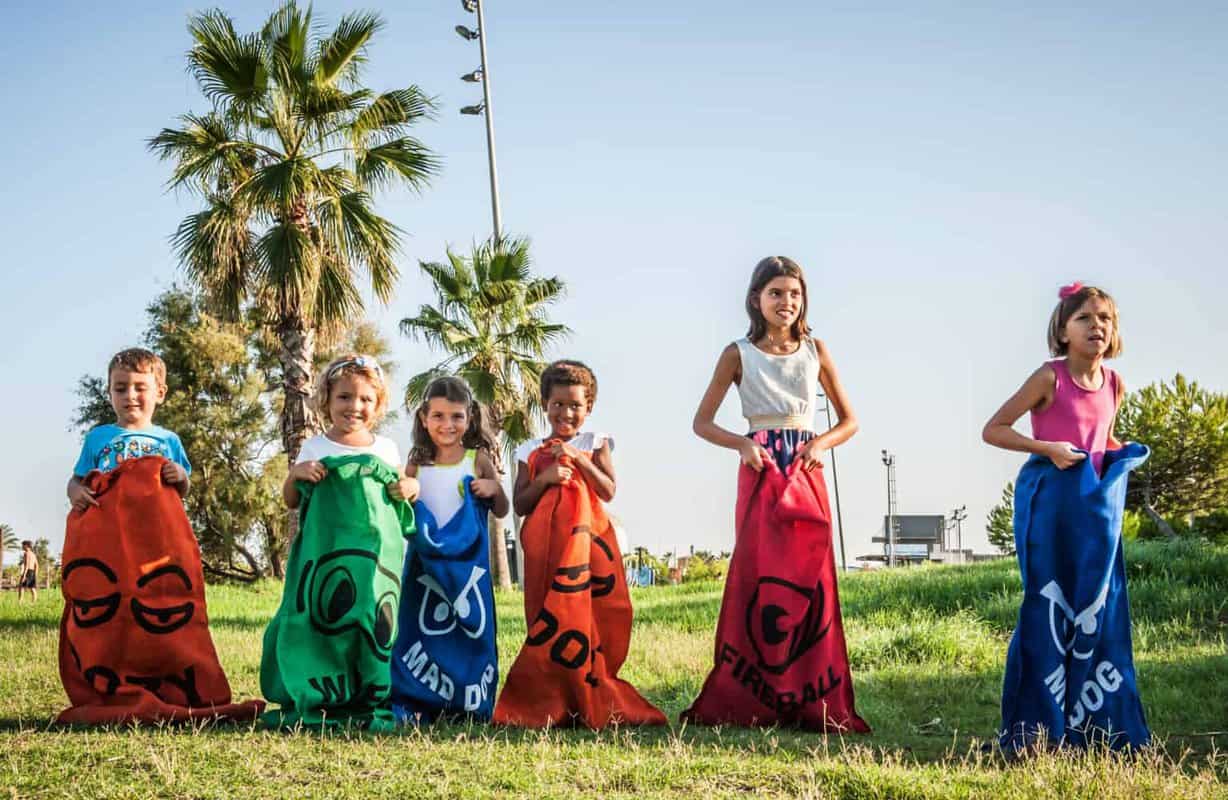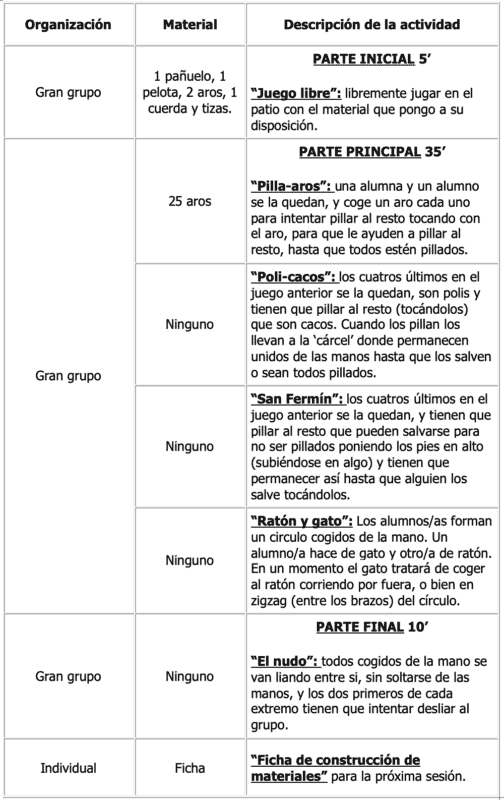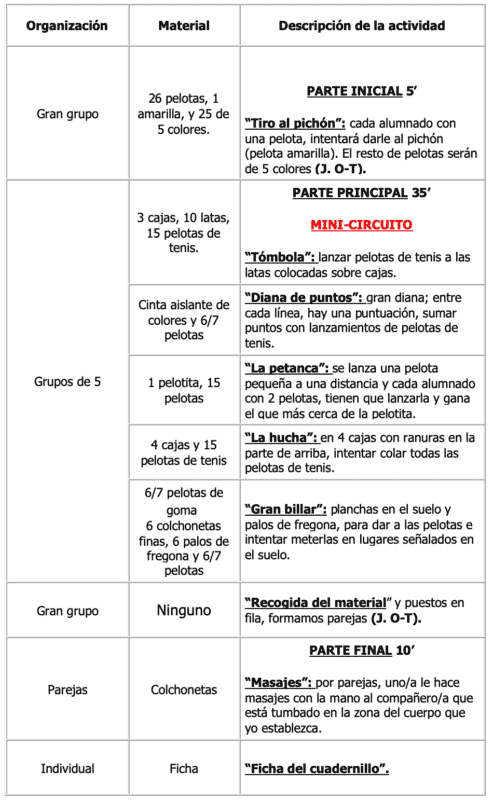In the following article on Traditional Games in Physical Education, we show one of the contents to be dealt with in this subject, which is suitable for Primary and Secondary Education.
We focus on what are the traditional games in physical education and their educational value, the characteristics that differentiate them from other games and sports and a practical proposal to deal with them.
What are traditional games in Physical Education?
Traditional games in physical education can be defined as a sport game frequently practiced in a long cultural tradition, which has not been sanctioned by social instances (1).
As for their evolution, traditional games in physical education can be found all over the world, since centuries (2).
These games are repeated in different parts of the world, but each one represents the reality of the place where they were first practiced, they keep specificities of the historical-socio-cultural aspects of the place.
Besides, nowadays it helps us to know our villages in a deeper way.
“The popular games revive from generation to generation, they pass from one people to another, they evolve and are modified until they are part of the popular features of each culture or region” Huizinga.
When were traditional games created?
It is not possible to establish the exact place or date of the creation of traditional games (3).
However, it is known that the games were initially related to daily work and they showed skills to carry them out or outstanding aspects of the same in the area where they were practiced in the same way.
They went from being games related to work, to competitions on the mimes, for example there were games of strength where the stonemasons or people who are engaged in work that were related to it, practiced and competed.
The stonemasons lifted stones and sought to lift the heaviest stone and that the rivals could not with this weight(3).
Since the 20th century, the tendency to compete in this type of sport has disappeared, causing traditional games to disappear due to the lack of promotion in the media and lack of economic benefits.
In order to fight against this loss, it is necessary that the generations of adults and older people do not stop transmitting to the younger ones the games they have played, their tradition, the reasons for their practice and what they mean to them.
In this way, as far as possible, it will be possible to pass from one generation to another and traditional games will not fall into oblivion.
Characteristics of traditional games in physical education
There are a series of characteristics that are repeated in the great majority of traditional games, some of which are shown below:
- they are played by children and adults without a specific purpose, simply for the pleasure of playing.
- The players are the ones who decide when, where and how to play, since they do not have to follow specific forms or rules and can be adapted to the characteristics of the players and the situation.
- they have simple rules, easy to understand, that can be memorized without too much effort and that everyone can follow.
- just as the rules, spaces, players… can be decided, the rules are negotiable.
- the games do not require a lot of material, the material is cheap or can be self-built.
- can be implemented at any time and place, regardless of the situation.
Traditional games allow us to value our culture
Traditional sports and games in Physical Education offer each territory or village the possibility to maintain and expand its sport without having to be fixed as an institution.
In this way, it is a cultural asset that is passed on from generation to generation to occupy free time and turn it into leisure time. Moreover, the same game can give rise to other forms that could in turn become new games (4).
There are many classifications of games, most of which distinguish between children’s games and adult games, and within adult games there are different categories: fighting games, strength games, work games, precision and distance throwing games, locomotion games, etc.
Traditional games in Physical Education are not catalogued in the same way as cooperative games or collaboration-opposition games. Within these there are games in all domains of action:
- Traditional games and motor practices that are performed alone (psychomotor) and in a stable environment.
- Traditional games in physical education and collaborative motor practices in a stable environment.
- Traditional games in physical education and oppositional motor practices in a stable environment.
- Traditional games in physical education and motor practices of cooperation-opposition in a stable environment.
- Traditional games in physical education and motor practices in an unstable environment: psychomotor and sociomotor.
Educational value of traditional games in physical education
Regarding the educational value of traditional games in Physical Education, cooperation and coeducation stand out mainly.
They constantly try not to discriminate for any reason and focus on breaking the monotony and historical knowledge of the games themselves, helping to know the historical and cultural heritage of each area.
In addition, it tries to encourage and promote student participation through the use of alternative material, the adaptation of the same to the specific characteristics of the situation and the motivation to work a different content than usual.
Practical proposal of popular games in physical education
Next, different possibilities of work during a didactic unit of traditional games in physical education are shown.
- If the content to be dealt with in a session is strength games (5), tests can be carried out involving maximum and strenuous efforts, such as those required in lifting or carrying weights (it can be practiced with medicine balls of different weights and sizes) and traction and pushing sports games (such as, for example, the rope throw).
- Another possibility is to work on pursuit games and ball and target games. A possible session to work both contents is shown, having as a frame a didactic unit of traditional games in which each session is focused on games of one type (6):
Conclusions
Autochthonous or vernacular games are those that take place in a specific geographical area (Basque Country, Andalusia…).
Traditional games are those that are transmitted from generation to generation (parents to children, older children to younger children…), having a certain continuity throughout a historical period.
The popular games are the ludic activities that, at a certain moment, are practiced by a majority of people, by a certain group of a population.
We have spoken indistinctly of both, despite this initial nuance.
As we can see, traditional games in Physical Education are a great alternative as content of this area, motivating students with a different treatment than usual and getting them to know more deeply not only the games they play but also the culture and characteristics from which they come from.
“Traditional games are the heritage of humanity, being our children or students the legitimate heirs of this patrimonial wealth.
We, as mere transmitters, are in the obligation to preserve and promote them, contributing our efforts in the role we have been assigned to play” (Rebollo, 2002).
Bibliography
- Parlebas, P. (2001). Games, Sport and society. Lexicon of motor praxiology. Barcelona:
Paidotribo - Regina, M. (1999). Traditional games and their pedagogical projections. Lecturas: educación física y deportes, 4(13), 1-15. Retrieved from: https://www.efdeportes.com/efd13/juegtra1.htm
- Rodríguez, I. M. (2013). The traditional game as content and as a didactic tool in Primary Education.
- Lavega, P. (2010). Traditional games, emotions and competence education. II Curso de formación sobre O Patrimonio Lúdico. O Jogo Tradicional e as didácticas específicas.
- Méndez-Giménez, A., & Fernández-Río, J. (2011). Analysis and modification of traditional games and sports for their appropriate application in the educational field. Retos. New trends in Physical Education, Sport and Recreation, (19), 54-58. Retrieved from: https://www.redalyc.org/pdf/3457/345732285011.pdf
- Trujillo, F. (2008). Didactic unit: lifelong games. EFdeportes. 13 (125).
- Ruiz Juan, F. (2001). The game in the educational environment. Methodological proposals for its treatment in primary education.
- Lavega, P. (2000). Popular and traditional games and sports. Ed. Inde. Barcelona.



